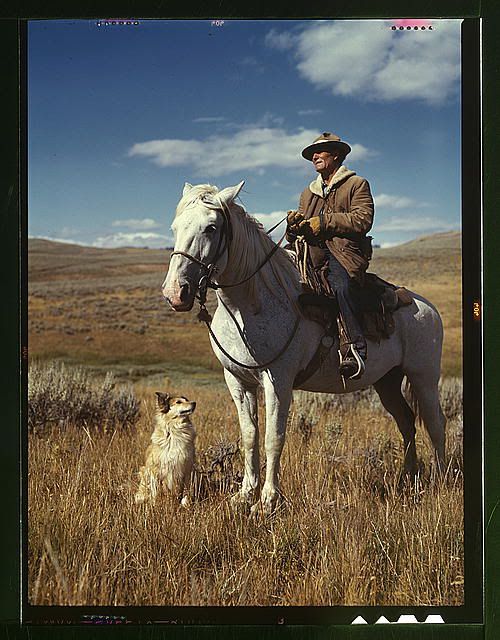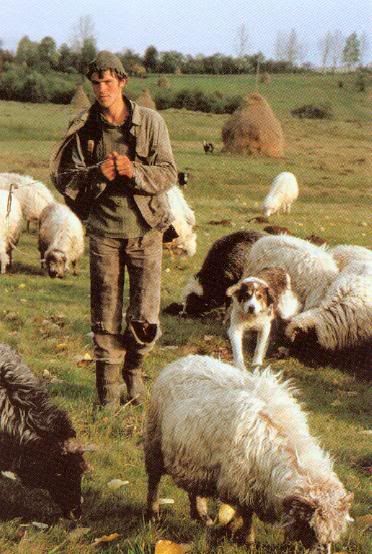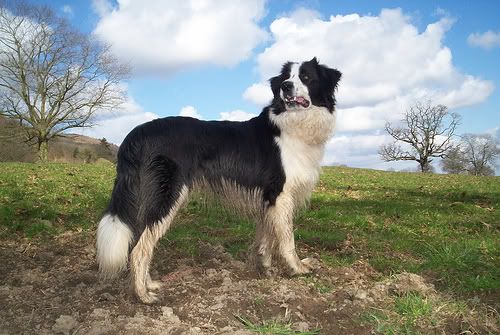When I began my perilous search for a photograph, I had no idea what I was doing. Not a single photograph stood out or seemed to make any argument for which I cared. I found this one, and I liked it. It's as simple as that. I wasn't sure what argument the photographer was trying to make, and I'm still not completely sure to this moment; however, I feel as if I've learned quite about making a rhetorical analysis of a documentary photograph. Over the course of my three word project drafts, I made several changes--both in my mind and in writing--to what I believed to be the main argument of the photograph. Exploring this argument was the toughest challenge for me in the process of creating this essay, and, though still unsure of my findings, I am quite comfortable with the finishing results.
Because I initially had no idea what argument was being made, I had a pretty tough time on my statement of purpose. As a result, I wrote more about an argument that I was going to make rather than an argument that the photographer was trying to make. Fortunately I was still able to see many of the strategies that were being employed by the photographer, thus making my statement of purpose somewhat useful to the rest of my writing project. I realize now, however, that I only scratched the surface of these strategies in my statement of purpose.
From the first rough draft to the second, I feel as if I didn't make too many changes. Most importantly, I altered my thesis statement, changing what I believed to be the photographer's main argument. It changed from something simple like "the shepherd has a tough life" to "the shepherd's life was tough mainly because of solitude." This change, though small, is somewhat important because the majority of my essay is focused around the concept of solitude and what strategies are used to show it. I also added a paragraph about the relationship between the shepherd and his horse since I had written about the relationship between the man and the dog.
As I gradually realized the importance of the "American Old West," the main argument went through another change. This time my thesis statement remained as it was, though. I simply stated that the author is making an argument that not only shows the difficult life of a sheep herder, but also undermines how most people think of the ideal American cowboy. Because of this, I also combed through my essay and tried to relate my arguments and examples to this specific context. I also decided to remove the aforementioned paragraph about the relationship between the man and the horse because, after reading through my essay a few more times, it felt out of place. I almost felt as if it took some of the importance away from the relationship between the shepherd and his dog. I also decided to remove the paragraph about the shepherd's facial expression. While it did support the arguments I was making, it presented itself as one small paragraph that veered in a random direction from the rest of my essay--my main focus was the background and the relationships displayed in the picture.
Final Draft
 In a troubling time following the Great Depression, when many of the major countries of the world are fighting in World War II, a photograph such as this might, at first glance, appear to be peaceful and worry-free. But, is this sheep herder's life truly any more relaxing than the lives of those experiencing the war firsthand? This photograph, among a large group of others, was taken to simply depict the way of life in various regions of the United States during the war. But behind this most basic of goals, the photographer is making an argument about the sheep herder's way of life, and, as an extension, our preconceived notions of the typical American Old West cowboy. Through this picture, the photographer wants the audience to experience, first hand, the arduous struggles of the sheep herding culture made all the more difficult by the unnerving lack of any human contact. The major elements of the photograph are aligned in such a way that the nature of the relationships between these elements can be clearly seen. These elements are contrasted against the background in order to draw the attention of the audience and bring into question the major differences between the background and foreground. Furthermore, through methods of strategically framing the photograph, the background is given a role that rivals the importance of the elements in the foreground.
In a troubling time following the Great Depression, when many of the major countries of the world are fighting in World War II, a photograph such as this might, at first glance, appear to be peaceful and worry-free. But, is this sheep herder's life truly any more relaxing than the lives of those experiencing the war firsthand? This photograph, among a large group of others, was taken to simply depict the way of life in various regions of the United States during the war. But behind this most basic of goals, the photographer is making an argument about the sheep herder's way of life, and, as an extension, our preconceived notions of the typical American Old West cowboy. Through this picture, the photographer wants the audience to experience, first hand, the arduous struggles of the sheep herding culture made all the more difficult by the unnerving lack of any human contact. The major elements of the photograph are aligned in such a way that the nature of the relationships between these elements can be clearly seen. These elements are contrasted against the background in order to draw the attention of the audience and bring into question the major differences between the background and foreground. Furthermore, through methods of strategically framing the photograph, the background is given a role that rivals the importance of the elements in the foreground. In the primary photograph, both the shepherd and his horse are facing the left edge of the picture. This is similar to nearly every picture I found depicting the idea of Manifest Destiny in which people are shown either traveling or looking to the left. These leftward vectors of attention are used because, to an audience viewing a picture, left is easily associated with a westward direction. Because the primary photograph was taken in 1942, the photographer, Russel Lee, most likely wasn't trying to make the audience think of Manifest Destiny itself so much as the time period and the traditional sense of the "American Old West." In this sense, the photographer is using logos to present the shepherd as a sort of classical representation of the stereotypical tough, gun-slinging cowboy who has experienced all sorts of rough adventures out in the "Wild West."
In the primary photograph, both the shepherd and his horse are facing the left edge of the picture. This is similar to nearly every picture I found depicting the idea of Manifest Destiny in which people are shown either traveling or looking to the left. These leftward vectors of attention are used because, to an audience viewing a picture, left is easily associated with a westward direction. Because the primary photograph was taken in 1942, the photographer, Russel Lee, most likely wasn't trying to make the audience think of Manifest Destiny itself so much as the time period and the traditional sense of the "American Old West." In this sense, the photographer is using logos to present the shepherd as a sort of classical representation of the stereotypical tough, gun-slinging cowboy who has experienced all sorts of rough adventures out in the "Wild West."An overwhelming number of sheep herders originated from regions in Spain and France that make up the Basque Country. Many Basques immigrated to America in order to start making a living. In most cases, Basque people planned on moving back to their homeland to start their own business once they had made enough money farming or herding in America. Most Basque immigrants chose sheep herding as a profession because a history of farming and hard work had prepared them for such a business. The shepherd's way of life turned out to be a bit tougher than initial speculations, though. While most shepherds stood strong through rough times, many changed professions after a few years primarily because of the overwhelming sense of complete social isolation. The sheep's constant demand of the shepherd's supervision played a major role in this, too. (Laughlin)
 This complete social isolation is a major focus of the primary photograph, presented by the choice of background. The background displayed in the primary photograph is only a small portion of a large area known as Gravelly Range in Madison County, Montana, where ranching is a major business activity. The picture to the left, however, shows another view of Gravelly Range. Clearly, this depiction of the extensive mountain range differs greatly from the primary photograph. For one, the number of elements is far greater than the background of the primary photograph. In this photograph, rocks are scattered in the grass, trees are spread throughout the rolling hills, snowy mountains tower high above the trees, and numerous clouds cover the sky. The background of the primary photograph contains only grass-covered hills and a blue sky with some clouds in the distance. The simplicity of the background does more than help to direct the attention of the audience towards the shepherd, horse, and dog; it emphasizes the lonely life of solitude that attacks the sheep herder from every angle. Additionally, the scale of the clouds is used in a way that makes the hills seem to stretch into infinite distances, overpowering the shepherd with a vast, uninhabited land from which there is no escape.
This complete social isolation is a major focus of the primary photograph, presented by the choice of background. The background displayed in the primary photograph is only a small portion of a large area known as Gravelly Range in Madison County, Montana, where ranching is a major business activity. The picture to the left, however, shows another view of Gravelly Range. Clearly, this depiction of the extensive mountain range differs greatly from the primary photograph. For one, the number of elements is far greater than the background of the primary photograph. In this photograph, rocks are scattered in the grass, trees are spread throughout the rolling hills, snowy mountains tower high above the trees, and numerous clouds cover the sky. The background of the primary photograph contains only grass-covered hills and a blue sky with some clouds in the distance. The simplicity of the background does more than help to direct the attention of the audience towards the shepherd, horse, and dog; it emphasizes the lonely life of solitude that attacks the sheep herder from every angle. Additionally, the scale of the clouds is used in a way that makes the hills seem to stretch into infinite distances, overpowering the shepherd with a vast, uninhabited land from which there is no escape. Most people would expect a photograph of a sheep herder to include at least a portion of the sheep herder's flock. However, in the primary photograph's situation, adding sheep to the picture would display additional relationships, which would do all but support the photographer's argument. Including multiple relationships within the photograph wouldn't necessarily mean that the shepherd has a strong companionship with every single sheep, but it would take the focus of the audience away from the empty background, losing the emphasis on the solitary conditions of the sheep herding way of life. Clearly, the photographer frames his picture in a way that highlights the solitude experienced by shepherds and, furthermore, cowboys in general.
Most people would expect a photograph of a sheep herder to include at least a portion of the sheep herder's flock. However, in the primary photograph's situation, adding sheep to the picture would display additional relationships, which would do all but support the photographer's argument. Including multiple relationships within the photograph wouldn't necessarily mean that the shepherd has a strong companionship with every single sheep, but it would take the focus of the audience away from the empty background, losing the emphasis on the solitary conditions of the sheep herding way of life. Clearly, the photographer frames his picture in a way that highlights the solitude experienced by shepherds and, furthermore, cowboys in general. The shepherd isn't completely alone, however; he always has his trusty horse and loyal dog. The dog, in specific, is aligned with the shepherd in such a way that the audience easily notices the relationship between the two of them. The dog's vector of attention is directed straight up to the shepherd, and his posture suggests that he is ready to jump at any command given by his master. Here, the herding dog is used as a symbol of companionship and loyalty, creating the perfect image of "man's best friend." To many sheep herders, this is exactly the relationship that should exist between shepherd and herding dog. One present day shepherd describes this relationship as "a partnership in which both the shepherd and the dog work together out of mutual trust and respect" (Nickelsberg 5). The close relationship between the herding dog and the shepherd display the strongest form of companionship experienced by the shepherd, which makes the relationship all the more noticeable to the audience. However, this is clearly a non-human relationship; thus, despite the strong companionship, the shepherd remains disconnected from society.
The shepherd isn't completely alone, however; he always has his trusty horse and loyal dog. The dog, in specific, is aligned with the shepherd in such a way that the audience easily notices the relationship between the two of them. The dog's vector of attention is directed straight up to the shepherd, and his posture suggests that he is ready to jump at any command given by his master. Here, the herding dog is used as a symbol of companionship and loyalty, creating the perfect image of "man's best friend." To many sheep herders, this is exactly the relationship that should exist between shepherd and herding dog. One present day shepherd describes this relationship as "a partnership in which both the shepherd and the dog work together out of mutual trust and respect" (Nickelsberg 5). The close relationship between the herding dog and the shepherd display the strongest form of companionship experienced by the shepherd, which makes the relationship all the more noticeable to the audience. However, this is clearly a non-human relationship; thus, despite the strong companionship, the shepherd remains disconnected from society.Clearly, both the emptiness of the background and the shepherd's companionship with the dog are extremely important aspects of the photograph. In a sense, the background and foreground both contrast and compliment one another. The contrasting concepts of companionship and solitude clash, just as they stand out in the photograph. While the sole relationship between the shepherd and his dog are made even more noticeable because of the background's pathos of solitude and emptiness, the background, in turn, is made more noticeable because of the few elements in the foreground. In other words, the shepherd's companionship with the dog emphasizes the background and its tendency to create feelings of loneliness. The photographer highlights the overlooked aspects of the typical image of the American Old West cowboy, turning the once thought of American dream into somewhat of a nightmare.
So what do the difficult lives of sheep herders in 1942 have anything to do with our lives today? Most of us here probably don't spend our time in the mountains herding sheep all day; however, many professions today can be viewed in a similar manner. Some sheep herders and cowboys may have viewed solitude as a chance to escape the troubles of World War II, but I'm sure many of them weren't so optimistic after experiencing it first-hand for several consecutive days. The individual's that stuck with it, though, are the one's that contributed to the magnificent symbol that many of us imagine when talking about cowboys.
Works Cited
Laughlin, Mike. "Basque Ranching Culture." 2009. Lee Raine. 18 Sept. 2009 <http://www.cowboyshowcase.com/basque.htm>.
Nickelsberg, Ellen. "Large Flock Sheep Herding: The Working Relationship." 2009. Ranch Dog Trainer <http://www.german-shepherdherding.com/sheepherding.htm>.